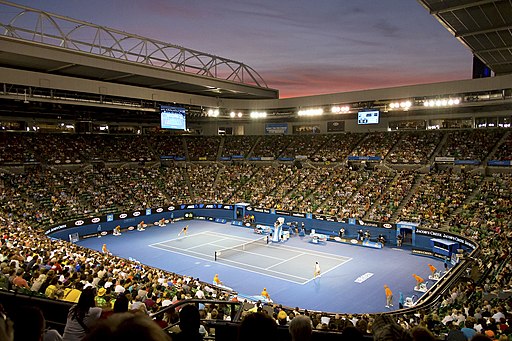Game, set, match: How the Australian Open is limiting expressions of Russian identity

The 2013 Australian Open at Rod Laver Arena
Anna Johnson - When Russia invaded Ukraine, most of the world was shocked. Many Russian citizens left their homes to protest while others, mostly young men, fled the country to escape conscription. After nearly one year of conflict, Russia's narrative of the war has shifted - projecting a much stronger, positive image. Despite major material losses and economic fallout from the ongoing conflict, the Russian state has successfully leveraged expressions of identity through its media structure to shift public opinion to the side of the Russian state. This narrative shift comes from a resurgence in Russian identity fueled by propaganda and symbolic representations.
Symbols are a powerful representation of identity. Flags have significant symbolic meaning, tying people to their state’s history and culture while communicating that identity to others. As an expression of national identity, Russian and Belarussian fans have been displaying the flags of their countries during sporting events, prompting questions of whether these displays are appropriate given the ongoing conflict. In response, the Australian Open has banned flags from both Russia and Belarus from its competition. Athletes from Russia and Belarus have been allowed to compete, but they are not allowed to represent their states in the competition. Russian flags represent a complicated, nuanced relationship with the Russian state and the war in Ukraine. The Russian government has utilized symbols of identity to unite Russians behind a narrative of Russian victimhood, what the U.S. State Department calls “Russophobia.” The idea of Russophobia began with the Russian invasion of the Crimean Peninsula in 2014. While the majority of the Western world has recognized Russia as the aggressor in that conflict, Russia’s rhetoric paints a much more sympathetic picture of their state based on U.S. aggression in the region. Banning athletes from competing for Russia and fans from displaying symbols of Russian identity at sporting events limits expressions of Russian ideological power. While the West is unable to control the dissemination of identity-based Russian propaganda within the country, it can control expressions of that identity outside Russia.
The power of symbols as pillars of identity goes well beyond media narratives. When a person’s sense of identity connects directly to their nation and is used to justify political action, it becomes an expression of nationalism. The assumption of nationalism as an identity comes with several political assumptions, the most extreme of which is the belief that a nation has a natural right to its own state. True nation-states do not exist, but the idea of them still has the power to unite people around a more “pure” version of their national identity, reflecting an impossible version of reality - one Russian propaganda relies on in its justification of the invasion of Ukraine.
Image credit: Steve Collis from Melbourne, Australia, CC BY 2.0 via Wikimedia Commons

